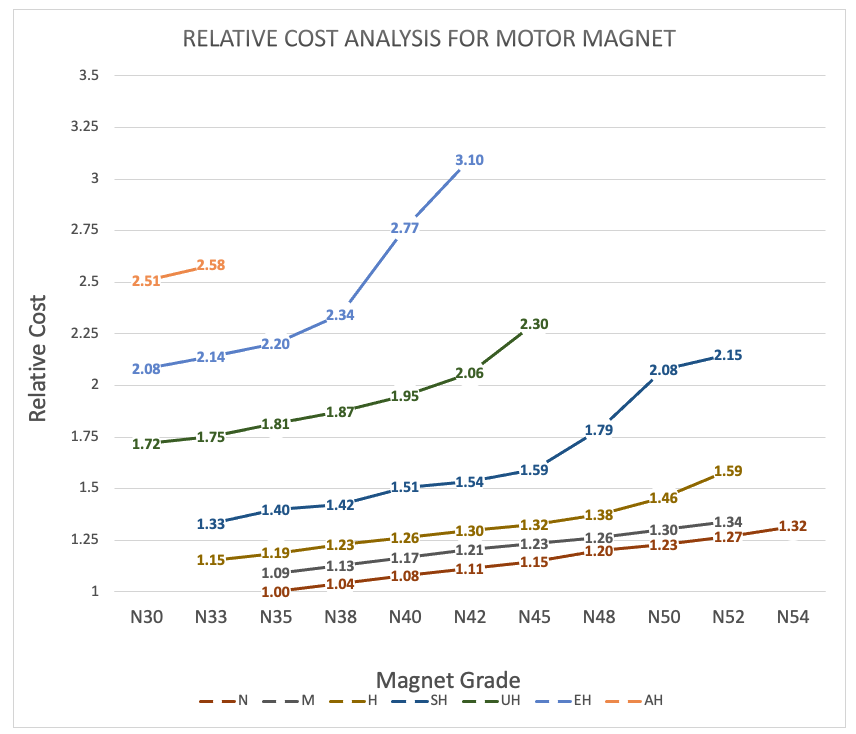
While some manufacturers only specify (BH)max and Hcj for their magnets, Quadrant’s engineers always consider a number of additional NdFeB magnet parameters when making the selection of the best material for a particular motor’s performance.
The induction and energy product, along with the input current, dictate the motor’s speed & torque. With the same windings, a higher induction material can reduce the current draw on a battery-powered motor and possibly save cost on the battery. The coercivity and the Hk ensure the motor will retain its torque at locked-rotor current. If the Hk is low, there will be irreversible loses in the magnet and performance degradation in the motor. The motor’s operating temperature will also directly affect the choice of the magnet’s Hcj. Hcj goes down at temperature goes up. When you calculate the Hcj required to withstand the motor’s demagnetizing forces, you must do that while considering the motor’s temperature extremes.
The elemental materials that provide higher coercivity have poor induction, a high coercivity NdFeB magnet will not have the highest energy product. When viewing the extensive array of magnet grades, you’ll see that as maximum Hcj goes up, maximum Br & (BH)max go down. To pick the optimal magnet material, Quadrant often first determine the required resistance to demagnetization then select the energy product that provides the desired torque.
While magnet prices go up as the energy product goes up, they go up gradually. Coercivity costs increase less gradually. There’s a little extra jump at the ≥ 20 kOe Hcj; the SH grade. But the cost of escalation becomes nonlinear as we progress up to the ≥34 kOe Hcj; AH materials. An N42EH material costs about three times as much as an N35. If you need to increase Br or Hcj, go with the Br increase.
Meanwhile, understanding the relative cost of magnetic material for motor application is critical for both material efficiency and cost effectiveness. The chart exhibits the relative cost for various Neodymium magnet grades, providing a cost idea on how each improved magnet energy product changes the performance of the motor. The curve has a small slop at the beginning in lower magnet grade but increases rapidly at the highest MGO ratings.

Above cost is not actual but sufficient based on the market Dy and PrNd price as of 8/30/20.
Very high energy product magnets, such as a 54 MGO material can be used to make high-performance motors in a small package. It’s especially good for micro-motors. Voice coil drivers also have low de-mag fields and can use the higher induction. A 40 MGO magnet could be used to make the same motor, but that motor would be larger in size.
While every pure magnet material is fragile, sintered NdFeB is less so than most others. Ceramics and SmCo magnets break and chip very easily. Sintered NdFeB, while also fragile, can withstand more impact without breaking. While we will not openly suggest it, sintered NdFeB magnets have be screwed into the stator.
Quadrant often use bonded NdFeB for very high-speed motors. The nonconductive binder insulates the NdFeB particles from each other and so there are little to no eddy currents in the magnets. And tight-tolerance intricately shaped bonded magnets can be made in large volume. After the mold is complete, rapid shots of uniform magnet compound can quickly produce large quantities of magnets with complex-shape.
Different grades can be superior in different ways. Quadrant offers professional motor design and consulting services, please contact us for more information.